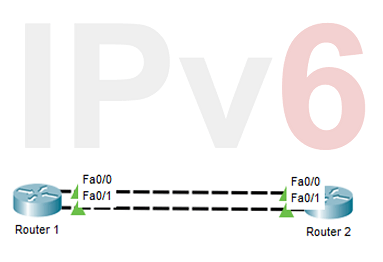Introduction
IPv6, the next generation of Internet Protocol, has become a crucial component of modern networking, addressing the limitations of IPv4 and ensuring the growth of the internet. Cisco Packet Tracer, a popular network simulation tool, provides an excellent platform for learning and practicing IPv6 concepts in a safe and controlled environment. In this comprehensive blog post, we will delve into the world of ipv6 packet tracer, understand its benefits, and explore how to configure and implement IPv6 addressing in simulated network scenarios. Whether you are a networking enthusiast, a student, or an IT professional, embracing IPv6 in Packet Tracer is a gateway to a more connected and future-proof networking experience.

Section 1: Understanding IPv6
IPv6, the successor to IPv4, was developed to meet the growing demand for unique IP addresses in the face of a rapidly expanding internet. Unlike IPv4's 32-bit addressing, IPv6 uses a 128-bit addressing scheme, providing an almost limitless number of IP addresses. This abundance of addresses supports the proliferation of connected devices, Internet of Things (IoT) technologies, and the seamless growth of the internet.
The IPv6 address format consists of eight groups of four hexadecimal digits, separated by colons. For example, an IPv6 address could look like “2001:0db8:85a3:0000:0000:8a2e:0370:7334.” However, IPv6 allows for abbreviation and representation of consecutive zeroes as “::,” making the addresses more concise.
Section 2: Benefits of IPv6 in Networking
- Expanded Address Space: The most apparent advantage of IPv6 is its vast address space, which ensures that every device can have a globally unique IP address. This eliminates the need for complex Network Address Translation (NAT) techniques used in IPv4 to conserve addresses.
- Simplified Network Architecture: IPv6 reduces the complexity of network administration by streamlining address assignment and eliminating the need for private address ranges. It provides a more straightforward and hierarchical network design.
- Improved Performance: With its simplified header format and streamlined packet handling, IPv6 improves network performance and reduces processing overhead on routers and switches.
- Enhanced Security: IPv6 incorporates built-in IPsec (Internet Protocol Security) support, providing a secure and encrypted communication channel by default.
Section 3: Implementing IPv6 in Packet Tracer
Step 1: Enable IPv6 Routing on the Router In Packet Tracer, start by enabling IPv6 routing on the router using the “ipv6 unicast-routing” command in global configuration mode.
Step 2: Configuring IPv6 Addresses on Interfaces Next, configure IPv6 addresses on router interfaces using the “ipv6 address” command. For example:
arduinoCopy code
Router(config)# interface GigabitEthernet0/0 Router(config-if)# ipv6 address 2001:0db8:85a3::1/64
Step 3: Implementing IPv6 DHCP Packet Tracer allows the setup of a DHCPv6 (Dynamic Host Configuration Protocol for IPv6) server to automatically assign IPv6 addresses to devices in the network. Configure the DHCPv6 server with a pool of available IPv6 addresses and relevant parameters.
Step 4: Testing Connectivity Verify connectivity between devices by sending IPv6 ping packets to their IPv6 addresses. Use the “ping ipv6” command on Packet Tracer's command line interface to test the reachability of other devices.
Section 4: Practical Use Cases for IPv6 in Packet Tracer
- Home Network: Simulate a home network with multiple devices, including PCs, smartphones, and smart home devices, all connected to a router with IPv6 enabled. Implementing IPv6 in this scenario showcases its capability to support numerous connected devices efficiently.
- Enterprise Network: Create a simulated enterprise network with multiple routers and switches, and configure IPv6 routing protocols such as OSPFv3 or EIGRPv6 to showcase IPv6's scalability and suitability for complex networks.
- Internet of Things (IoT) Application: Build a small IoT network with sensors, actuators, and IoT gateways, all communicating via IPv6 addresses. This demonstration illustrates how IPv6's vast address space can accommodate the explosion of IoT devices.
Section 5: Troubleshooting IPv6 in Packet Tracer
Common issues when configuring IPv6 in Packet Tracer include incorrect interface addressing, misconfigured routing protocols, and incomplete DHCPv6 setup. Troubleshoot these issues by verifying the interface configurations, checking routing tables, and ensuring the DHCPv6 server is correctly configured.
Section 6: Conclusion
IPv6 is the future of networking, addressing the limitations of IPv4 and enabling the seamless growth of the internet and connected devices. By exploring IPv6 in Packet Tracer, network enthusiasts, students, and professionals gain valuable hands-on experience with this essential technology. The benefits of IPv6, such as expanded address space, simplified network management, improved performance, and enhanced security, make it a crucial component of modern networking. Embrace IPv6 in Packet Tracer and unlock the power of this future-proof networking technology, positioning yourself for success in the ever-evolving world of networking.




